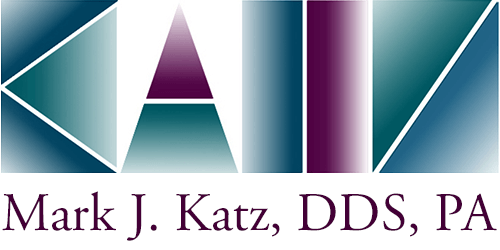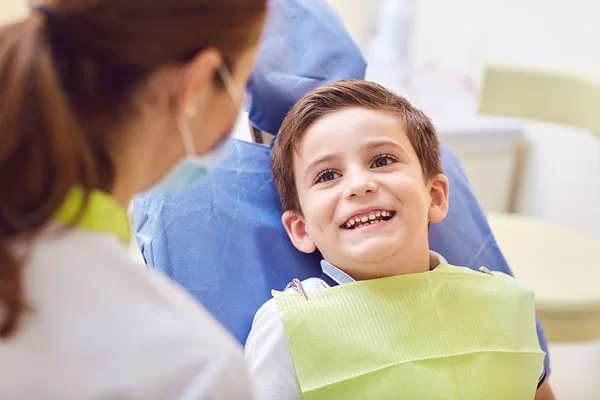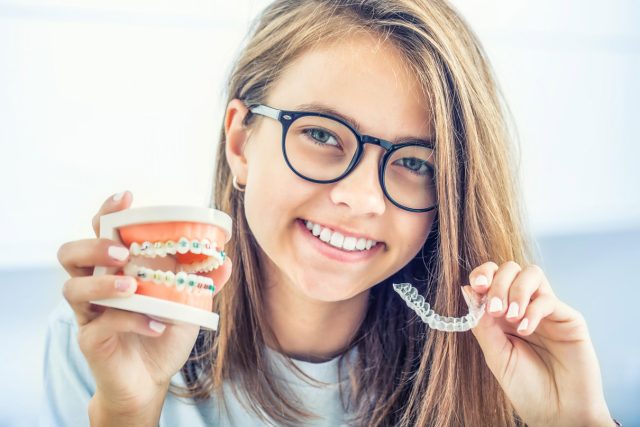A Guide for Parents on Child Orthodontic Treatments
Did you know that early orthodontic intervention can set the stage for a lifetime of healthy smiles? According to the American Association of Orthodontists, children should have their first orthodontic evaluation by age seven. Early screenings can help identify potential issues with your child’s teeth and jaw structure, ensuring timely and effective treatment.
If you’re in Greensboro, NC, or nearby areas like High Point, Reidsville, or Summerfield, now is the perfect time to explore how early orthodontic care can benefit your child. Contact Katz Orthodontics to schedule your orthodontic consultation with Dr. Mark Katz by calling our Greensboro office at (336) 286-5800 or our Eden office at (336) 627-1537.
Why Early Orthodontic Evaluation Matters
Early orthodontic evaluations aren’t just about braces or aligners—they’re about prevention and planning. By age six or seven, most children’s first set of permanent teeth and baby teeth coexist. This stage allows orthodontists to assess the alignment of your child’s teeth, identify issues like crowding, crossbites, or incorrect jaw position, and determine if there’s enough space for all adult teeth to emerge properly.
While not every child needs immediate treatment, early monitoring ensures that any developing problems are addressed at the right time. This proactive approach can reduce the need for more invasive treatments like jaw surgery or orthognathic surgery later in life.
When Early Orthodontic Intervention Is Recommended
Early orthodontic treatment, also known as interceptive treatment, is most effective when started during your child’s growth phase. Here are some common orthodontic problems that benefit from early intervention:
- Severe Crowding: When there’s not enough space for permanent teeth, a palatal expander can widen the upper jaw, creating room for teeth to align properly. This can prevent the need for tooth extraction or lengthy treatment with braces later.
- Crossbites and Underbites: Misaligned jaws can lead to difficulty chewing, speech issues, and uneven wear on teeth. Early treatment with appliances like expanders or braces can guide the jaw into the correct position.
- Protruding Teeth: Front teeth that stick out are more prone to chipping and fractures. Early intervention can protect your child’s teeth and improve their smile.
- Bad Habits: Thumb sucking, tongue thrusting, and mouth breathing can affect your child’s oral health and jaw development. Orthodontic treatments can help correct these habits before they cause long-term damage.
Benefits of Early Orthodontic Treatment
There are many benefits of having your child receive early orthodontic intervention:
- Prevents Future Problems: Addressing issues early can reduce the risk of tooth decay, gum disease, and tooth loss.
- Improves Oral Health: Properly aligned teeth are easier to clean, promoting a better child’s oral health.
- Boosts Confidence: A healthy, straight smile can enhance your child’s self-esteem.
- Saves Time and Money: Early treatment often means shorter treatment duration and fewer complications down the road.
If you think your child would benefit from an orthodontic consultation, contact our Greensboro office by calling (336) 286-5800 or the Eden office at (336) 627-1537.
Common Orthodontic Treatments for Kids
At our Greensboro and Eden dental offices, we offer a range of orthodontic treatments tailored to your child’s needs, including:
- Braces: Traditional metal braces or clear aligners like Invisalign Teen.
- Palatal Expanders: To correct narrow jaws and crossbites.
- Two-Phase Treatment: A comprehensive approach that addresses issues in two stages for optimal results.
- Removable Aligners: For less severe cases, these custom-formed plastic guides can gently shift teeth into place.
Why Choose Katz Orthodontics for Your Child’s Orthodontic Treatment?
If your child needs orthodontic treatment, here’s why you should choose us!
- Experienced Orthodontic Specialists: Dr. Katz and our team are dedicated to providing top-notch care.
- Advanced Orthodontic Equipment: We use the latest technology to ensure effective and comfortable treatments.
- Serving Greensboro and Beyond: We’re proud to help families in Greensboro, Eden, High Point, Reidsville, and Summerfield achieve their best smiles.
The Process of Getting Early Orthodontic Treatment
If you’re considering early orthodontic treatment for your child, here’s what you can expect during the process:
- Initial Consultation: The first step is scheduling an orthodontic evaluation with Dr. Katz. During this visit, we’ll examine your child’s teeth, jaw, and bite, and discuss any concerns you may have. This is also a great time to ask questions about treatment options, timelines, and costs.
- Diagnostic Records: If treatment is recommended, we’ll take diagnostic records, which may include X-rays, photographs, and digital scans of your child’s teeth and jaw. These records help us create a customized treatment plan tailored to your child’s needs.
- Treatment Planning: Based on the evaluation and diagnostic records, we’ll outline a treatment plan that may include braces, clear aligners, palatal expanders, or other orthodontic appliances. We’ll explain the goals of treatment, the expected treatment duration, and any special care instructions.
- Starting Treatment: Once the plan is in place, we’ll begin treatment. For younger kids, this might involve using a palatal expander to create space or braces to correct alignment issues. For older children, Invisalign Teen or traditional braces may be recommended.
- Regular Checkups: Throughout treatment, your child will visit our office for regular checkups and adjustments. These appointments are essential to monitor progress and ensure everything is on track.
- Post-Treatment Care: After the active phase of treatment, your child may need to wear a retainer to maintain their new smile. We’ll provide guidance on how to care for their teeth and retainers to ensure long-lasting results.
Frequently Asked Questions
The American Association of Orthodontists recommends an initial screening by age seven. This allows a dentist or orthodontist to monitor your child’s growth and plan treatment if needed.
Absolutely! Children should wear a mouthguard to protect their teeth and orthodontic appliances during physical activities.
Encourage regular brushing with a soft-bristled toothbrush and fluoride toothpaste, and limit sugary snacks that can promote tooth decay.
If your child loses or damages their orthodontic appliance, contact your orthodontist’s office immediately. They’ll repair or replace the appliance to keep treatment on track.
Schedule Your Child’s Orthodontic Consultation in Greensboro, NC
Early orthodontic intervention can make a world of difference in your child’s smile and overall oral health. If you’re in Greensboro, Eden, or nearby communities like High Point or Summerfield, don’t wait to schedule a consultation with Dr. Katz. With decades of experience in child orthodontics, we’re here to provide personalized care and treatment plans tailored to your child’s needs.
Call our Greensboro office at (336) 286-5800 or our Eden office at (336) 627-1537 to book an appointment today. Let’s work together to give your child a healthy, confident smile!
Related Articles
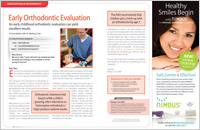 Early Orthodontic Evaluation
Early Orthodontic Evaluation
Early detection of orthodontic problems in young children may make it easier to correct those problems in the long run. Waiting until all of the permanent (adult) teeth have come in, or until facial growth is nearly complete, may make correction of some problems more difficult or even impossible. An early childhood orthodontic evaluation can yield excellent results… Read Article
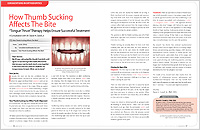 How Thumb Sucking Affects The Bite
How Thumb Sucking Affects The Bite
Thumb sucking can actually block the front teeth from erupting fully and can also push the teeth forward — sometimes more on the side where the thumb rested. How far out of position the teeth end up will depend on the number of hours per day the thumb was in the child’s mouth and how much pressure was applied. When the pressure exerted by the thumb in the mouth is particularly strong and occurs over a long period of time, the forces can potentially influence growth of the jaws… Read Article
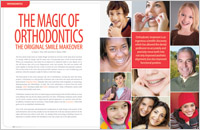 The Magic of Orthodontics
The Magic of Orthodontics
Proper alignment of the teeth is basic to “Smile Design.” Their position dictates how they work together and affects the way you look and smile. Only orthodontic treatment can move teeth into the right position. Simply put, when things look right, they probably are right. Learn the basics of smile analysis and design and whether the magic of orthodontics will work for you… Read Article
